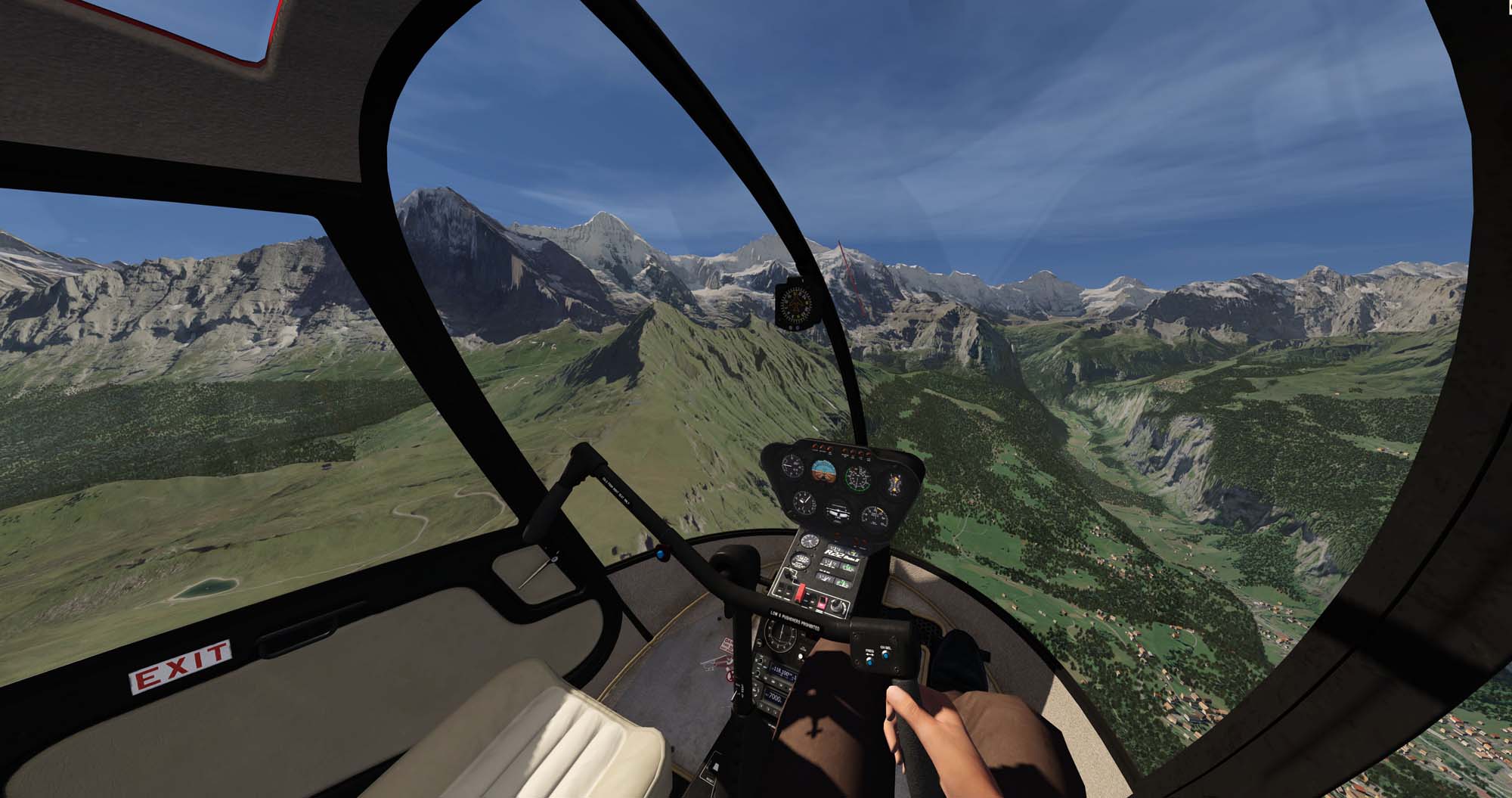Virtually Immersed

Those who recognize a market need will always have a business opportunity. Take VRM Switzerland, for example — an innovative flight simulation specialist that is harnessing the power of virtual reality (VR) to reduce helicopter accidents and improve flight safety. In April, VRM Switzerland received European Union Aviation Safety Agency (EASA) approval for its Robinson R22 Virtual Reality Training Device — the first such approval by an aviation authority and the culmination of seven years spent exploring and refining VR technology. In addition to EASA, the U.S. Federal Aviation Administration (FAA) is examining the safety benefits of applying VR technology to pilot training. The FAA is collaborating with VRM and the U.S. Helicopter Safety Team (USHST) as part of the latter’s Helicopter Safety Enhancement #91 on Improving the Fidelity of Simulation Devices. VRM Switzerland is now pursuing FAA certification of its VR technology for rotorcraft pilot training. The Dübendorf, Switzerland-based company has been working with simulation since 1998, progressing to the introduction of a VR prototype in 2014. “We immediately realized VR would be a game changer in simulator technology,” said Fabi Riesen, founder & CEO of VRM Switzerland and one of the company founders. “All of a sudden, we have a three-dimensional view. If you move the head, everything is represented as seen in real life.” VRM Switzerland collaborated with Professor Guido Schuster and his team at the Interdisciplinary Center for Artificial Intelligence (ICAI), based at the Eastern Switzerland University of Applied Sciences. Together, they launched a research project in 2015. The goal was to improve the existing VR technology in combination with a motion platform. “Existing VR glasses were horrible,” said Riesen. “Everyone said the idea was great, but it would take ages until it could be used.” In 2016, VRM Switzerland partnered with IPACS, a German company developing simulators for remotecontrolled helicopters. The Swiss organization bought full exclusive commercial rights to the technology, which centered on graphics and highspeed simulation. By 2017, VRM Switzerland had released its first VR simulator prototype depicting a fixedwing fighter jet flying in the Swiss Alps. But by the following year, the company decided to focus exclusively on helicopters.

“We were working on a Robinson R22 simulator,” said Riesen. “EASA had released its Rotorcraft Safety Roadmap defining measures to reduce helicopter accidents. One proposal is to introduce more realistic and affordable light helicopter simulators to allow every pilot to train skills.” As the saying goes, VRM Switzerland was in the right place at the right time. “We were there with an almost finished product and a market need,” recalled Riesen. In 2019, VRM Switzerland signed an innovation partnership contract with EASA, to define and certify the use of VR technology in the aviation training market. During the pandemic in 2020, the Swiss company hunkered down to refine its R22 VR training device to meet EASA requirements. Finally, on April 26, 2021, certification was received. “The key was to use VR to create a complete system that allows you to operate the helicopter in a realistic, fully immersed way,” explained Riesen. Now, the company is working to certify a VR device for the Airbus Helicopters H125. Said Riesen: “We’ve qualified an entire system with virtual reality technology. We can now scale up to any type of helicopter.”

Fabi Riesen
CEO VRM Switzerland
Smaller footprint, bigger capability
Compared to existing mixed reality or dome projection devices, VRM Switzerland’s VR simulator is smaller and more capable than large full flight simulators. As an example, Riesen pointed to helicopter vertical reference training for transporting sling loads. “With VR, you see the smallest movements of the helicopter because of the 3D view. This matters for the helicopter pilot. If they are doing work close to the ground, visual cues are not always sufficient with dome projection.” With normal VR glasses, the pilot is unable to see themselves interacting with the helicopter. But VRM’s system scans the pilot’s movements in real time. An avatar represents the pilot’s body, allowing them to operate switches and knobs just as they would in the cockpit. “We are synchronizing the whole system with the VR glasses so buttons are perfectly aligned,” said Riesen. “The reason why mixed reality doesn’t work so well is that you don’t have all of these effects. Due to their position away from the eyes, mixed reality cameras create a geometric distortion, resulting in negative training.” VRM’s simulator can be housed in the corner of a hangar or even in a trailer, saving the cost of sending crews away for training. The company offers a full range of remote support. Existing customers include Air Zermatt, Heli Austria, Helitrans Norway, Mountainflyers, Heli Academy and Kopter. VRM Switzerland closely co-operates with well-known helicopter experts, including Claude Vuichard.

Currently, an EASA private helicopter licence requires 45 hours of flight time, with most students averaging 60 hours. Those additional 15 hours can be done in a VRM Switzerland VR simulator, saving students money and operators the wear and tear on their machines. Of the time required in the aircraft for a private licence, EASA allows five hours to be completed in a VR simulator. “It’s much more efficient in terms of training. You don’t have to fly back up into the sky to do autorotations,” said Riesen. “In the simulator, this time is saved by repositioning the helicopter in seconds.” VRM Switzerland’s VR helicopter simulator can be ordered with different window configurations and special ops simulation packages, such as external cargo flying. Expanding those options is a priority, as is the addition of new helicopter models. “It’s not any more a dream or a wish or an idea,” concluded Riesen. “We now have customers using qualified devices. It’s kind of like a full flight simulator in a Swiss Army knife format, right at your home base. Our vision is to have this tool available and stop seeing helicopter accidents that could have been prevented.”
BY LISA GORDON



